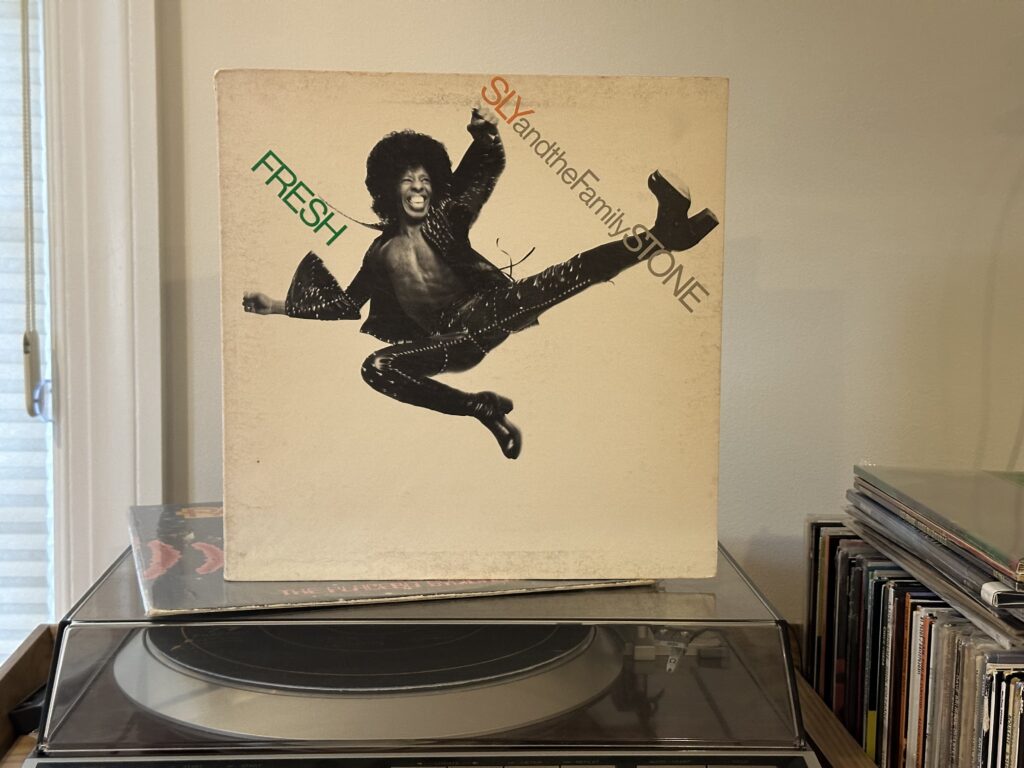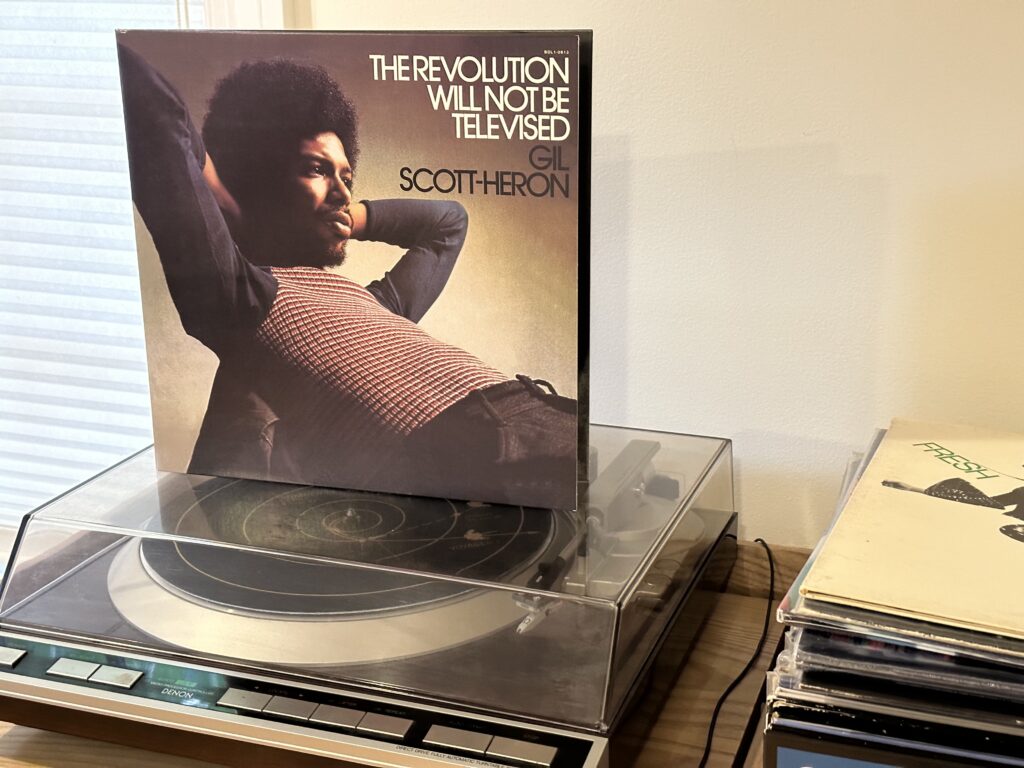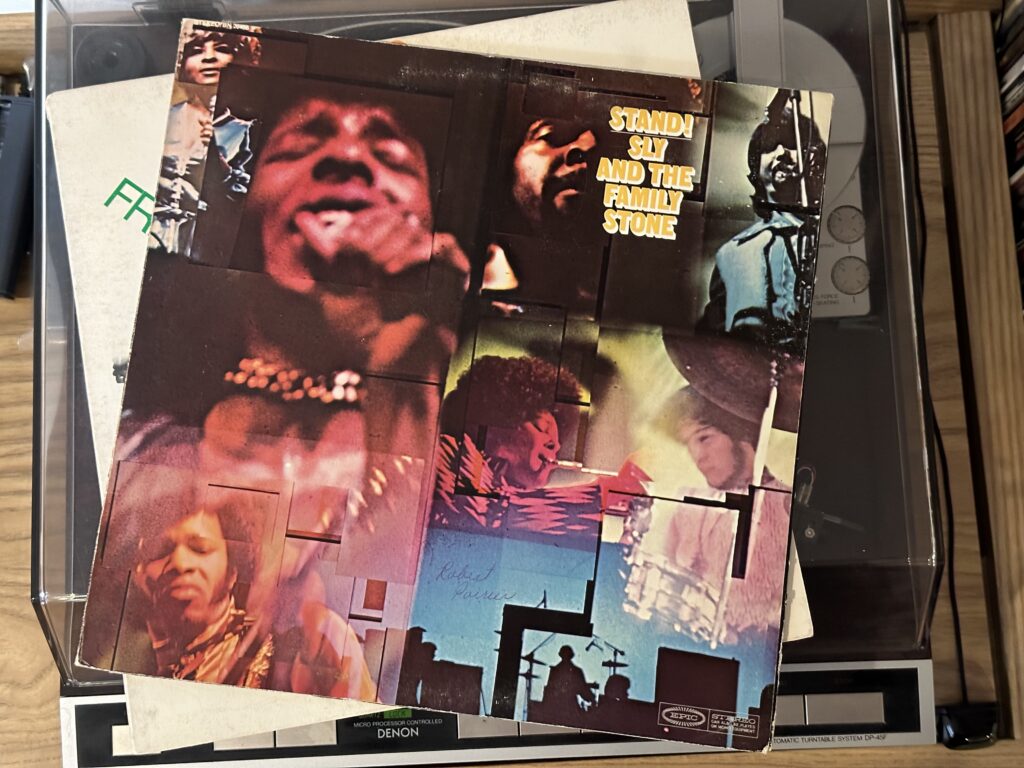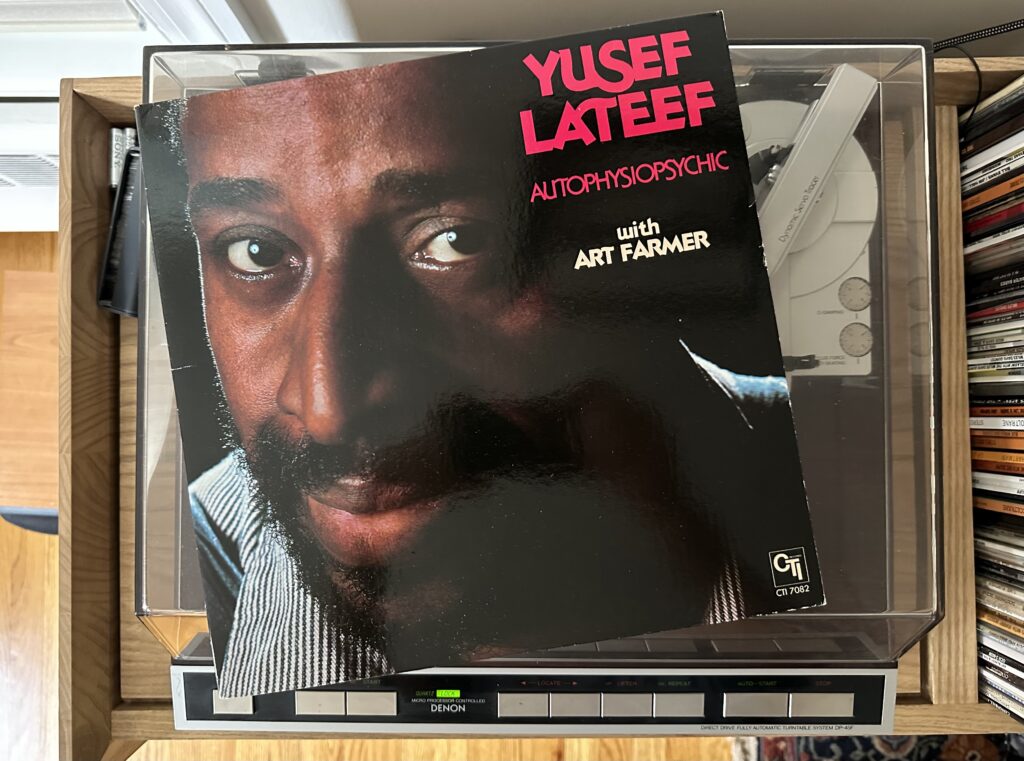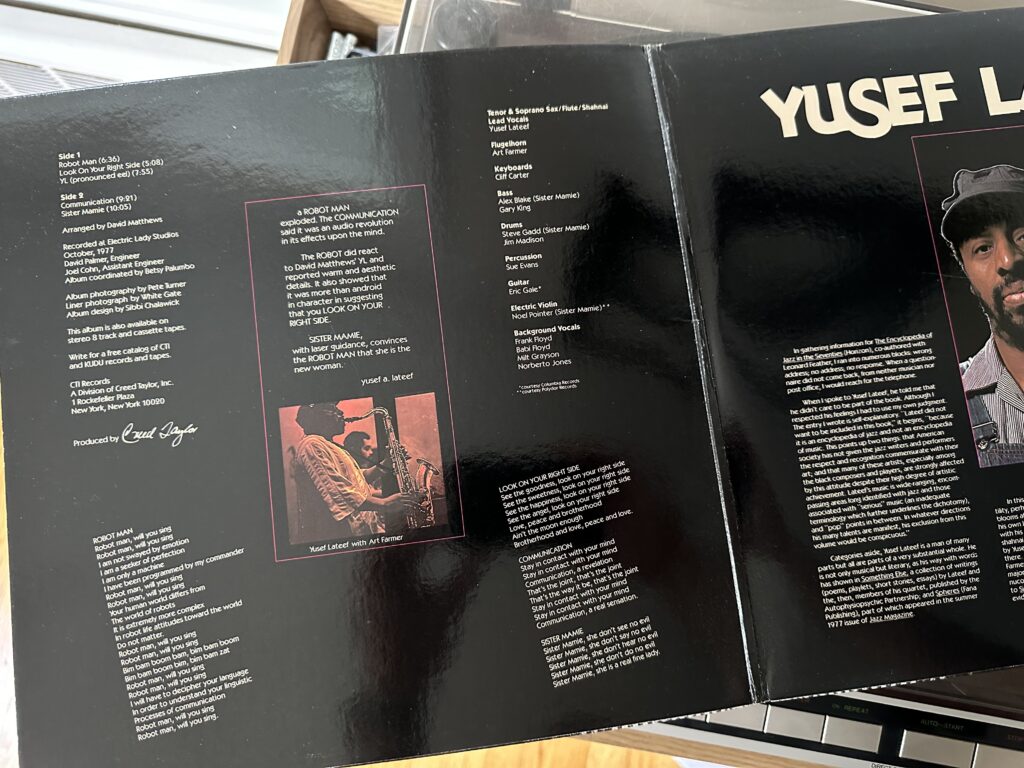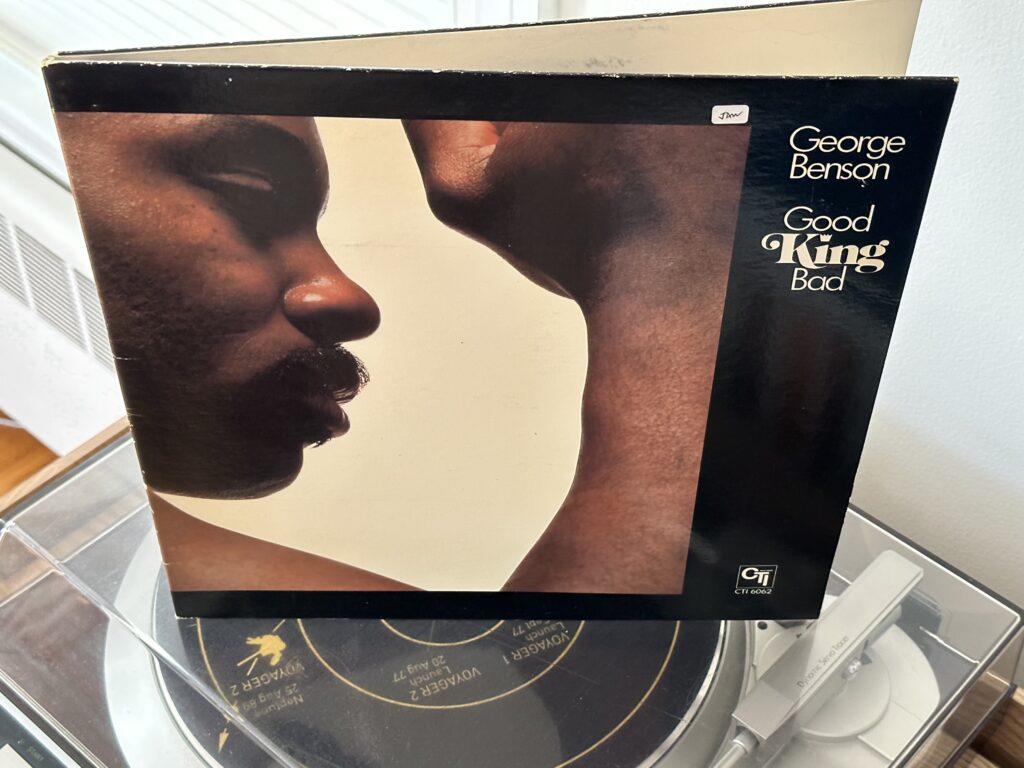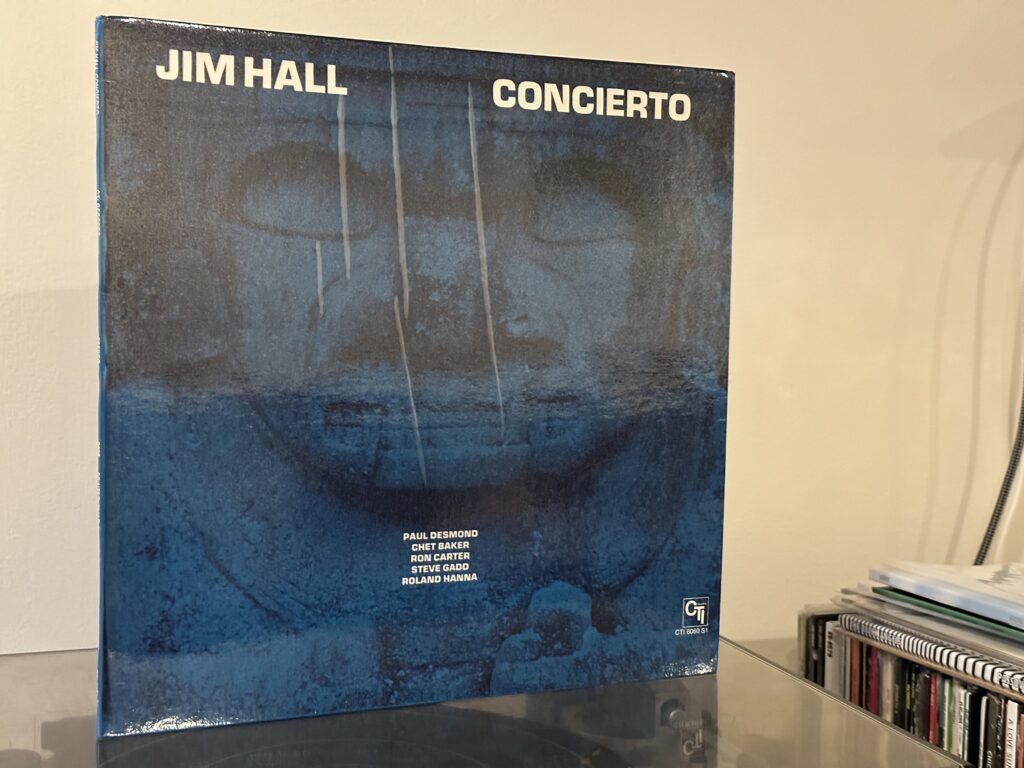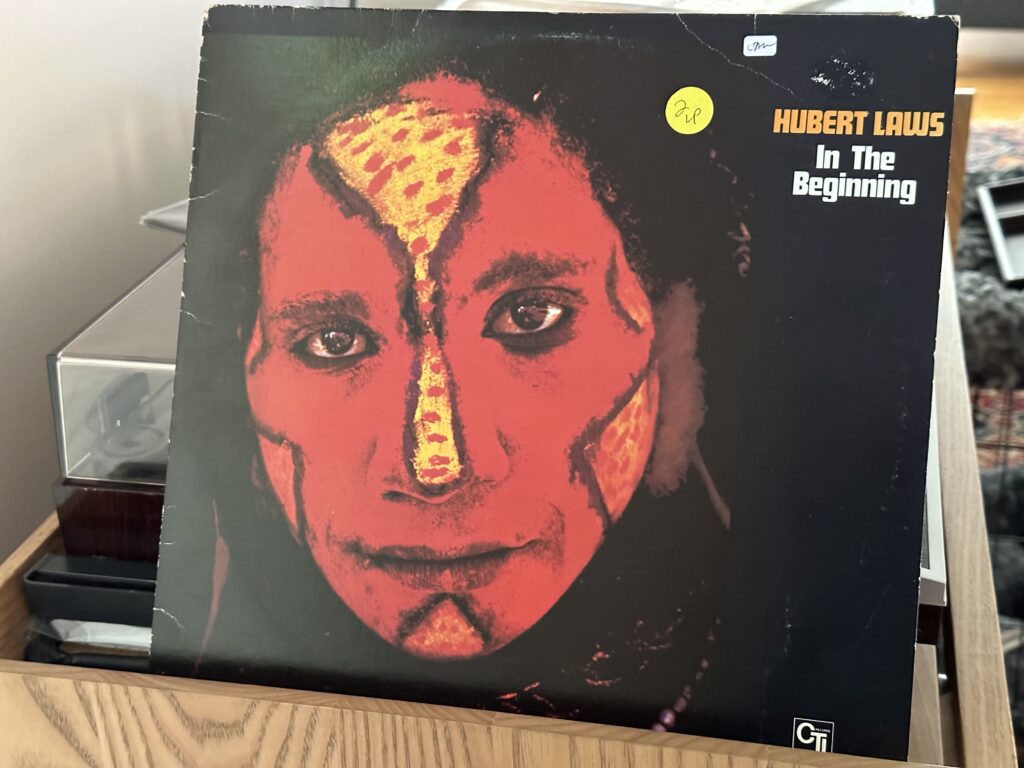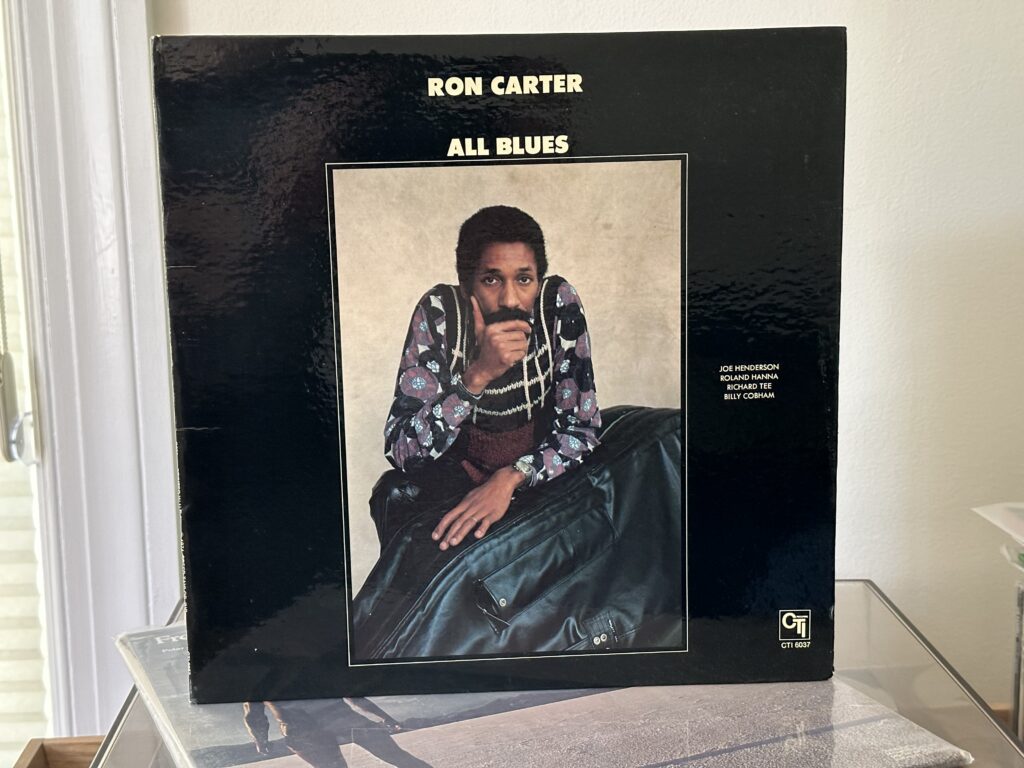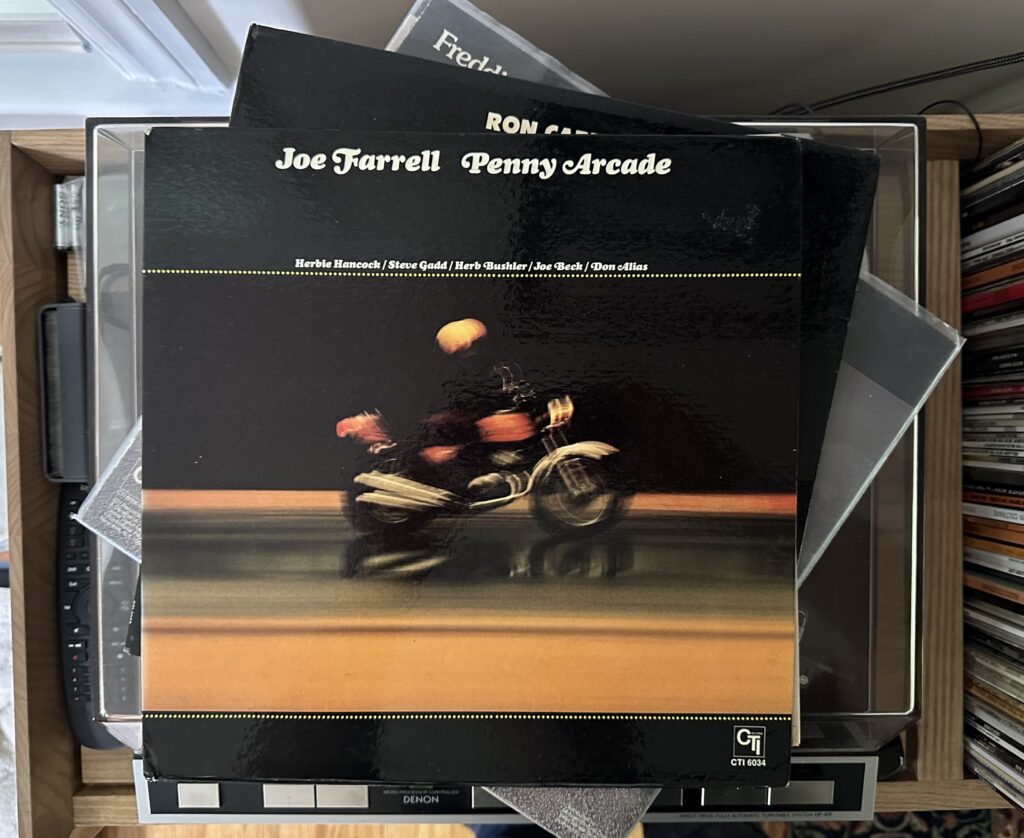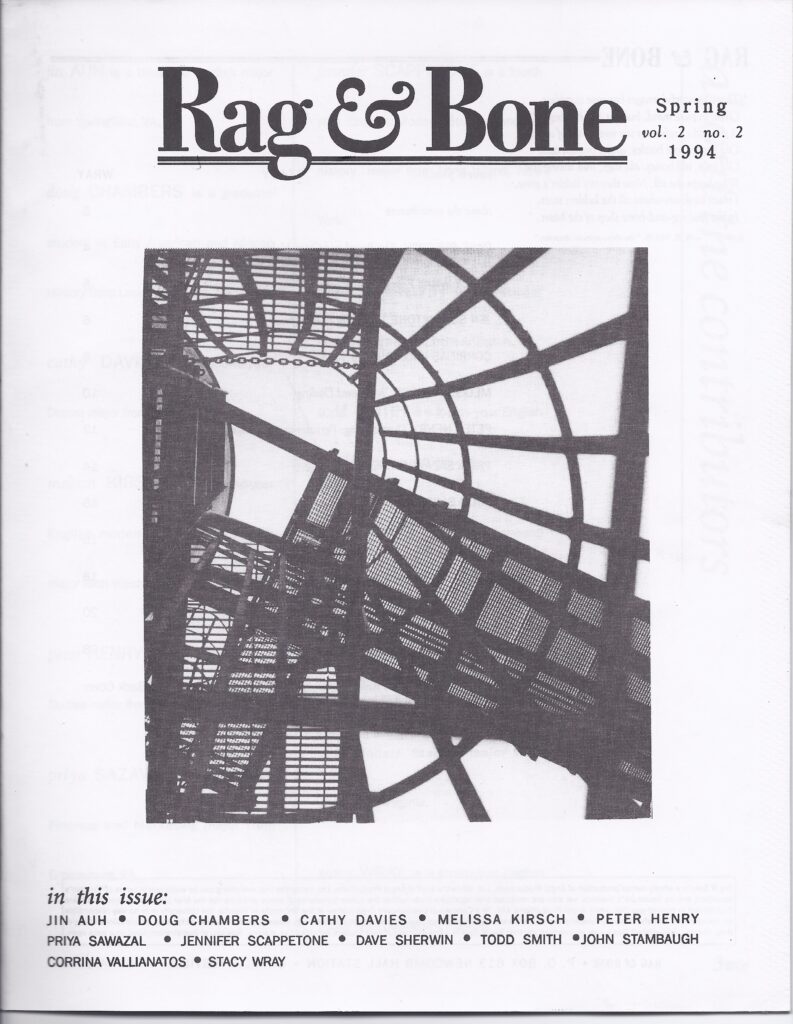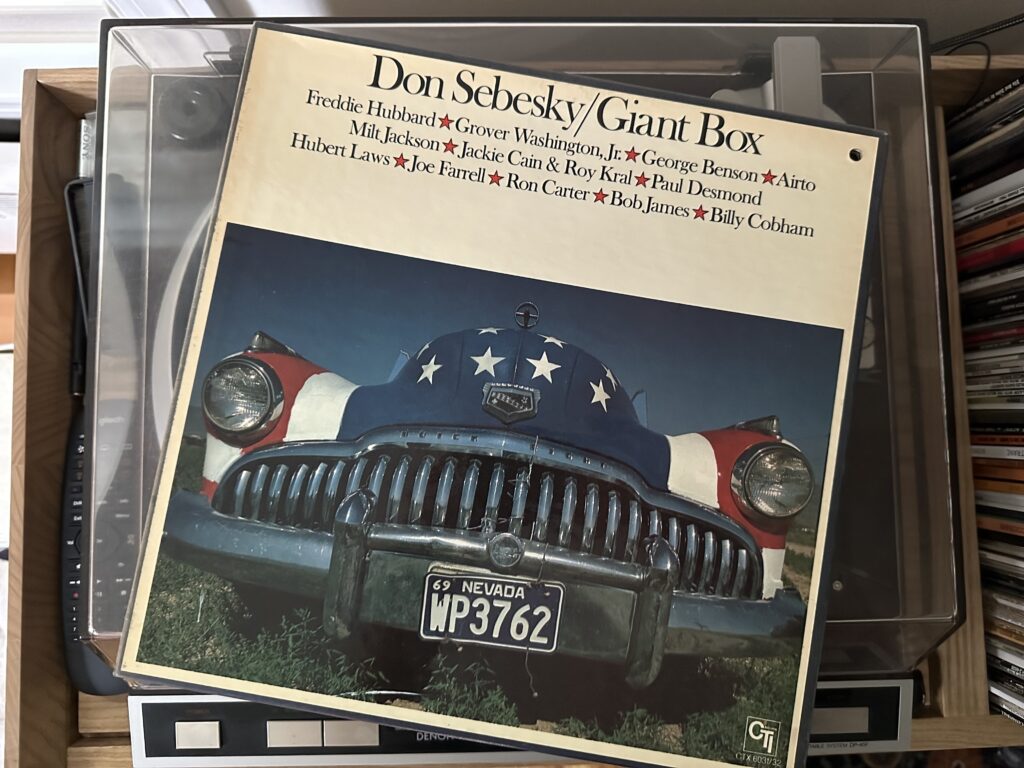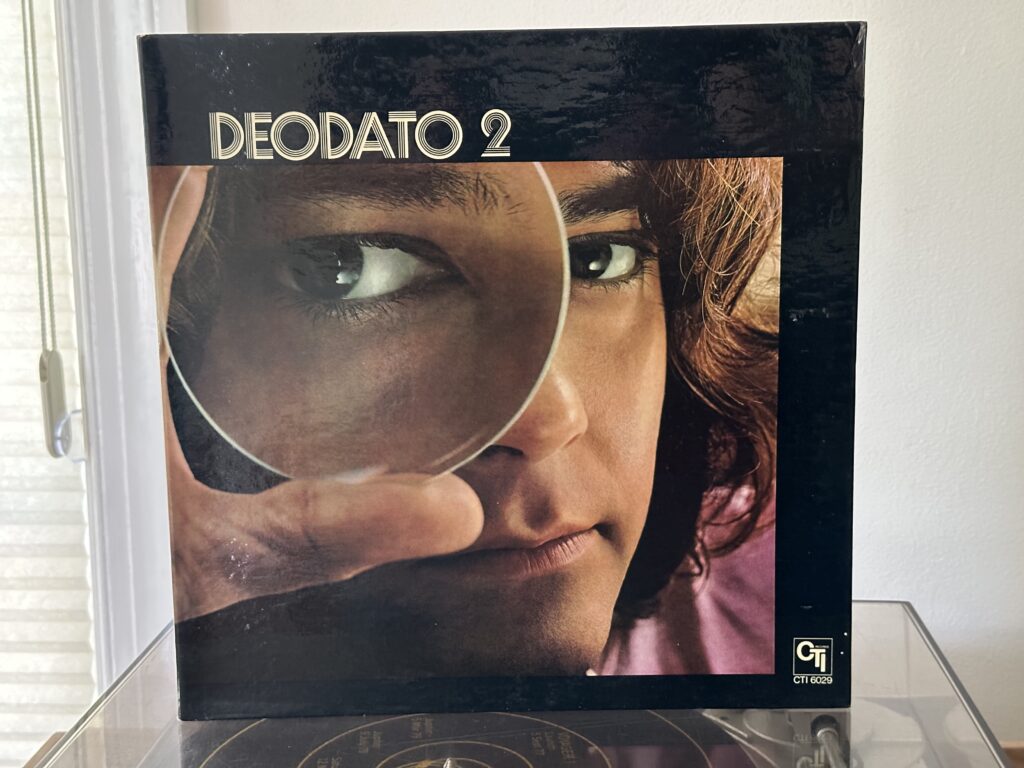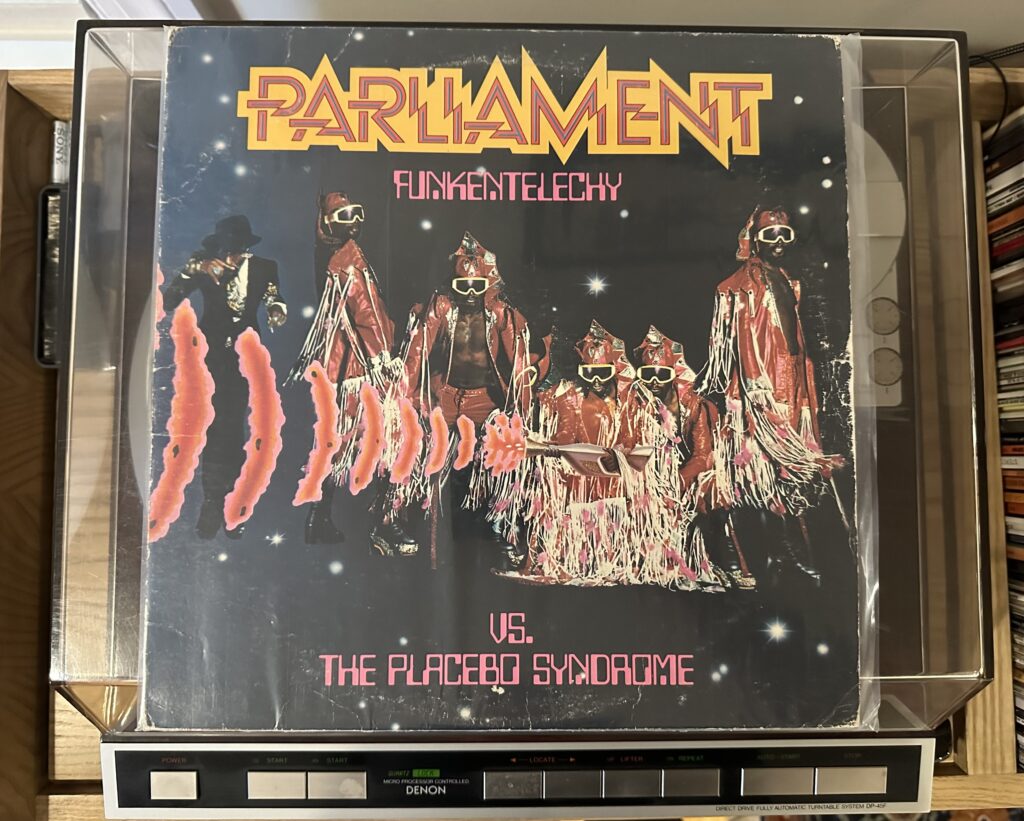
Album of the Week, October 7, 2023
There are three albums to talk about in this review. In the first, Sir Nose D’Voidoffunk (“if you fake the funk, your nose will grow”) attempts to sway the citizens of Earth to abandon the cosmic secrets of funk for the placebo effect of the Pleasure Principle, but is foiled by the hero Star Child who renders him funky with the assistance of the Bop Gun. In the second, funk rhythms hide a sharp critique of materialist and medicated 20th century society and urge the listener to embrace the entelechic perfection of being through doing. And in the third, a veteran of the doo-wop and R&B scenes hones his concept of dance music to the highest degree in response to a challenge from the forward surge of disco music, creating a masterpiece that goes on to influence 80s pop and hip-hop. Welcome to the worlds of George Clinton, where low meets high and everything has multiple meanings.
Clinton was born in Kannapolis, North Carolina in 1941, moved with his family to Plainfield, New Jersey, and formed a doo-wop group which he dubbed the Parliaments while still in his teens. He became a staff songwriter for Motown and had a hit with “I Wanna Testify” in the 1960s. When he lost the right to use the Parliaments name following a dispute with his label, he renamed the group Funkadelic (or so it was named by the group’s original bassist, William “Billy Bass” Nelson) and signed to Westwood Records in 1968. The newly renamed group pursued an aggressive form of funk-rock, heavy on guitars but with the original Parliaments—Clinton, Ray Davis, Fuzzy Haskins, Calvin Simon, and Grady Thomas— on vocals. After regaining the rights to the name, he launched a second group, now called Parliament, featuring the same members as Funkadelic but with a more horn-forward funk flavor. The band went briefly dormant but relaunched in 1974, signing to Casablanca Records.
The history of the two bands is complicated, but briefly: Clinton’s early albums featured a mix of dance grooves and political consciousness, with “Chocolate City,” about the growing political power of African-Americans in Washington, DC, an early stand-out. Starting with Parliament’s third album Mothership Connection, Clinton swerved hard into Afrofuturism, introducing an entire mythology around the arrival of Parliament’s funk—P funk! Uncut funk! The bomb!—from outer space on the Mothership, thanks to the Star Child. The mythology got increasingly baroque; following albums introduced Dr. Funkenstein and his Afronauts, who laid upon Manchild the secrets of Clone Funk but later repossessed them, burying them in the pyramids until a more positive attitude toward funk could develop.
Which brings us to the current album. By this time, Parliament featured only Ray Davis of the original Parliaments, but had accrued a galaxy of talent, including composer and keyboard genius Bernie Worrell, bassist Bootsy Collins, guitarists Michael Hampton and Phelps Collins, guitarist/vocalists Glenn Goins and Garry Shider, drummer Jerome Brailey, and horn players Fred Wesley, Maceo Parker, and others. The Collins brothers and Wesley and Parker had formed the core of James Brown’s original J.B.s in 1970, playing on “Super Bad,” “Get Up (I Feel Like Being a) Sex Machine,” “Soul Power,” and “Talking Loud and Sayin’ Nothin’,” among others, before leaving in a pay dispute. This band recorded the most unusual of Clinton’s records, marrying the cosmic funkography with slinky dance grooves. It also contributed to his cosmology, notably through a comic book that was included with the record.
The conflict between good and evil, or funk and placebo, is introduced on the opening track, “Bop Gun (Endangered Species).” The opening lines “Turn me loose/We shall overcome/Where did you get that funk from?/Turn them on/They’re spoiling the fun/Let’s shoot them with the Bop Gun” set up the album’s key themes of transcendence of struggle through music, and overcoming unfunky opponents with highly weaponized funk. The track features Clinton’s trademark repeated funk choruses (including a recurring admonition “don’t let your guard down”) over a repeated chromatic descending horn line, a slinky bass line that hangs around the seventh and the octave before ascending up from the depths in the bridge, and a tight drum line that keeps things solidly anchored to a 4/4 beat. Over it all is a superb vocal line from Glenn Goins, and the whole thing is shot through with bop gun effects courtesy Worrell’s Moog synthesizer and Bootsy’s bass. It’s a nine minute plus joyride.
The opposing team is introduced in “Sir Nose D’Voidoffunk (Pay Attention).” Sir Nose D’, as he’s referred to by the Star Child, doesn’t have many lines, but he is set up as the “subliminal seducer” who refuses to dance, and other lines suggest that he distracts the funky faithful with drugs. Star Child arrives and announces that he will protect the Pleasure Principle, the name under which the Clone Funk secrets appear on this album. The song itself leverages the “Three Blind Mice” and “Baa Baa Black Sheep” nursery rhymes and melodies, transformed into a minor key. The call for vigilance repeats, this time with the Star Child calling upon the listener to “Pay Attention!”
“Wizard of Finance” is the one song on the album in which Clinton mostly dispenses with the P-Funk cosmology for a doo-wop inspired, sax-forward romance song. It’s the shortest song on the album and the most straightforward, but still connects to the album through its rejection of money for the sake of money. Clinton’s narrator says “If I had plenty of money/I’d probably spend it all in one year/I’d be busy buying you flowers, girl/Just to show you I appreciate your being here.” The harmonies on the chorus are joyous and gospel inflected. On a lesser album it would be a standout track, but here it’s a respite before the second side of the album.
The title track “Funkentelechy” opens the second side with one of Clinton’s greatest admonishments, “Yo! This is Mood Control saying you might as well pay attention if you can’t afford free speech.” The Star Child urges the listener to be aware of attempts to supply fake alternatives to funk in the form of commercialism (“You deserve a break today! Have it your way!”) and self-medication (“When you’re taking every kind of pill/Nothing will ever cure your ill”). Instead, he offers funkentelechy, the condition of achieving complete self-actualization by staying in constant pursuit of funk. More or less. He never defines the word, but entelechy is a recognized philosophical concept dating back to Aristotle, and the invented word takes prime place in the bridge. The track sets up the battle between Mood Control, who seeks to pervert the Pleasure Principle with help from the self-indulgent Urge Overkill, and Mood De-Control, the home of the Funk. The track itself is an incredible layered jam, with at least six different chants and themes passing over each other to create a dizzying treatise on free will and self-indulgence.
The opposing force, the “Placebo Syndrome,” sounds pleasant enough, but pay attention—“You’re in the Syndrome/And the intensity of their sadness/Is equal to the intensity they enjoy.” Another song that leverages the vocal harmonies of the original Parliaments, this one goes in circles, ultimately fading out in an echo of the weakness induced by the Placebo Syndrome.
The spell is broken by Bernie Worrell’s mighty keyboards, opening “Flash Light.” Parliament’s biggest hit, it went to Number One on the R&B charts and rose to #16 on the Hot 100, largely on the strength of Worrell’s mighty synthesized bass line, played on multiple Minimoog synthesizers that were wired together. The song plays out the final confrontation between Sir Nose and the Star Child; the former is hit with the Flash Light from the Bop Gun, shouting, “Oh, funk me!” as the chorus sings, “Most of all he need the funk/help him find the funk.” But the power to spread the funk is universal, as the second chorus confirms: “Everybody’s got a little light under the sun.” Musically there’s a lot going on with the track, with Clinton’s pitch shifted voice doing double duty as Sir Nose and Star Child, a rhythmic backdrop of guitars and handclaps, Bootsy Collins playing drums, a fierce Maceo sax line, and multiple layers of synth keyboards, all pulled together with that chromatic swaggering bass line on the Minimoog. There’s even a chant, “da da da dee da da da da da da da,” that Clinton borrowed from something he heard at a bar mitzvah.
Clinton’s Parliament never quite again hit the same heights of joyful inclusivity, nor the depths of philosophical inquiry, that they achieved on Funkentelechy vs. the Placebo Syndrome. Band members began to fall away after the follow-up, The Motor Booty Affair, due to disagreements over Clinton’s management of the band. But Clinton kept going, recording the solo album Computer Games and the hit single “Atomic Dog” in 1982, producing Freaky Styley for the Red Hot Chili Peppers, collaborating with Prince on Graffiti Bridge, and ultimately bringing back the P-Funk All Stars into the studio on 1996’s T.A.P.O.A.F.O.M. (The Awesome Power of a Fully Operational Mothership). He still tours; I saw him and the band on November 13, 1999 for a show in which the band came out two hours late and played til dawn. Glenn Goins died in 1978 of lymphoma; Ray Davis passed away in 2005; both Phelps “Catfish” Collins and Garry Shider died of cancer in 2010; Cordell Mosson died of liver failure in 2013; and Bernie Worrell died of lung cancer in 2016. Bootsy, Fred Wesley, Maceo Parker, Michael Hampton, Jerome Brailey, and George Clinton are still around, flash lights shining strong.
Next week we return to jazz, starting a series on two jazz singers who hailed from my home town. You can listen to today’s album here:

